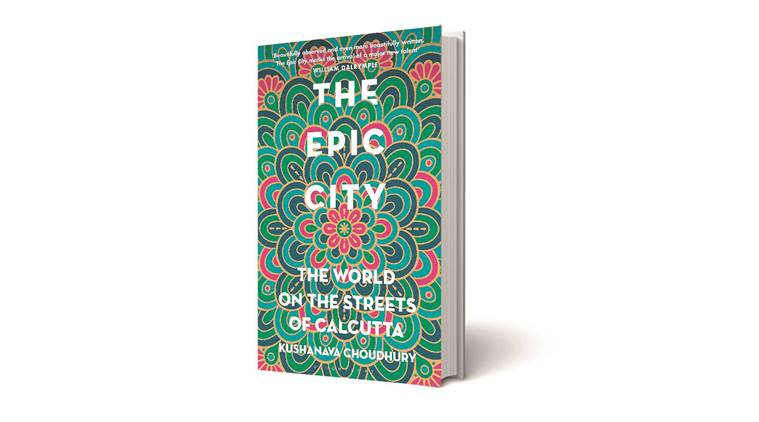An empathetic look at a heartbreaking city

Calcutta is personal. And the front flap blurb contains all the trigger words: immigrant, Princeton, British Raj, mosquitoes, hawkers, fish-sellers. Would this be another book balancing nostalgia with wide-eyed wonder? Or would it hit the road running in one more case of parachute authoring? Or, worse, would it be a supercilious outsider’s take on a city that is easy to love, easy to hate, but hard to know?
Calcutta, that most storied of cities, has been subjected to all kinds, right from Geoffrey Moorhouse’s 1971 work to Amit Chaudhuri’s Two Years in the City (2013). In recent years, it has been best served by Strangely Beloved: Writings on Calcutta (2014), a compilation of essays and excerpts that, by virtue of its format, held up special-interest mirrors to facets of the city, from the Eastern Calcutta wetlands to the soundscape that birthed India’s first rock band. The flipside is the academic undertone that robs the city of some of its joy, and the nostalgia shoehorn that depletes some immediacy.
Superficially, The Epic City has none of those problems: Kushanava Choudhury spent some of his childhood years in Calcutta and then comes back to work in the city as a reporter at The Statesman (peeve: the article is part of the masthead, so why lose it?) at the turn of the millennium as a fresh Ivy League graduate. “Like the revolutionaries of my parents’ generation, I wanted to change things…My best hope for making a difference was to work at a newspaper.” To translate those efforts to “make a difference” into a book would be a straight card into disaster zone. Where Choudhury scores emphatically is in twinning his heart, mind and soul — his own story — with the city’s to forge a work that is as gritty as the Beleghata canals, as wondrous as Kumortuli, as determinative as the Partition.
Groomed in the shoe-leather reporting The Statesman was once renowned for (the newspaper’s decline is an obvious parallel for the city), Choudhury lends depth to his observations with lightly worn erudition to produce one of the most readable accounts of a world city. Casual chats with relations, friends, colleagues merge seamlessly with purposeful conversations with trade unionists, little magazine archivists, impoverished scions of Calcutta’s oldest families, descendents of refugees, small publishers, idol sculptors. Underlying it all is an understanding of cultural crosscurrents — Satyajit Ray, of course, but more (and more powerfully) Ritwik Ghatak, Michael Madhusudan Dutt but also Mujtaba Ali — and an instinctive sense of history that burrows into unarticulated spaces, uncomfortable silences.
Cleverly constructed and utterly relevant as each of the 14 chapters of the book is in conveying Choudhury’s clear-eyed vision of the city, two, in my mind stand out. In ‘College Street’, the essay that opens the core section, the author uses a favourite trope for all city chroniclers to eviscerate one of its most fondly held myths: Of Calcutta as a centre of learning. Traipsing through the portals of little magazines and past “rainwater and dog shit” of university avenue, Choudhury trains his guns on the “notes business”, which finesses the education system to ensure intellectual stagnation more effectively than the much-reviled brain drain ever could.
The mood of The Epic City grows darker as it investigates the methodical de-industrialisation of Calcutta — the old factories in the southern reaches memorialised only as bus-stops such as Bengal Lamp and Usha — the rarely acknowledged Hindu-Muslim divide (including at The Statesman, as cosmopolitan as the city likes to think itself to be) and, in ‘Russian Dolls’, it culminates in a familial account of the run-up to Partition and its aftermath.
Weaving together the devastating sequence of the World War II in Europe, the Churchill-directed Bengal famine, the consequences of Direct Action Day with his own grandparents’ displacement from East Pakistan and pitching forward to the rise of the Communists and the Naxal rebellion to his father’s decision to migrate, Choudhury creates a stunning, tight fabric of continuum. Always empathetic, mostly sharp and frequently insightful, this is a heart-full work on a heartbreaking city, notwithstanding the gaping hole of the post-2011 Mamata Banerjee years. While it might even impress the resident Calcuttan, it is definitely recommended for anyone else ever touched by the city.
Sumana Mukherjee is a writer in Bengaluru
source: http://www.indianexpress.com / The Indian Express / Home> Lifestyle> Books / by Sumana Mukherjee / October 07th, 2017